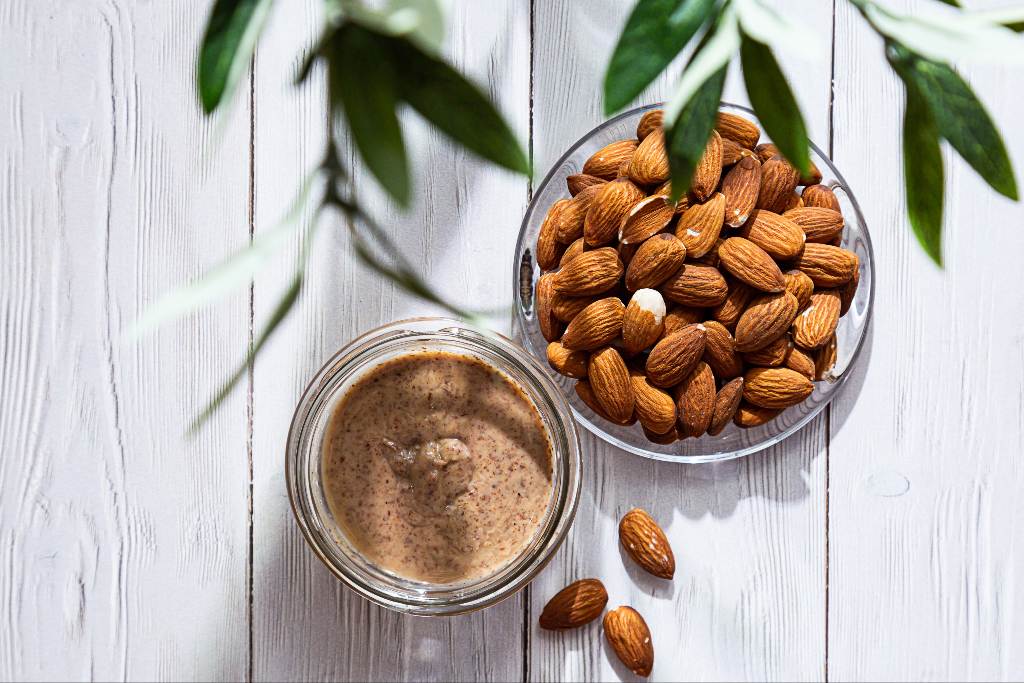
Shelf Life of Almond Butter and How to Store It
The shelf life of almond butter is an important consideration for food brands, manufacturers, and R&D teams developing products that rely on nut-based ingredients. Understanding how long almond butter stays fresh and how to store it properly can significantly impact product quality, consumer satisfaction, and commercial success.
Almond butter is valued for its rich flavor, healthy fats, and nutritional benefits. Its natural composition requires careful storage and handling to maintain quality over time. This guide explains shelf life, key factors affecting it, best storage practices, and how partnering with a trusted supplier like JSS Almonds can help products remain fresh longer.
Why Shelf Life Matters in Almond Butter Production
Shelf life affects product stability, safety, labeling accuracy, and customer satisfaction. Almond butter that separates, goes rancid, or loses sensory appeal before reaching consumers can damage brand credibility and result in costly waste.
Because almond butter is rich in unsaturated fats and natural oils, it is prone to oxidation if not handled and stored correctly. With proper formulation, packaging, and storage, its shelf life can extend beyond a year, ensuring products remain stable across distribution and retail channels.
Factors That Influence the Shelf Life of Almond Butter
- Processing and Ingredients
Almond butter made from 100% almonds usually has a shorter shelf life than products with natural stabilizers or added oils. The absence of preservatives requires attention to storage conditions and packaging. For a closer look at preparation methods that influence freshness and consistency, see How to Make Nut Butter. - Oil Content and Oxidation
Almond butter’s natural oils can oxidize over time, leading to rancidity and off-flavors. Exposure to light, heat, and oxygen accelerates this process. - Packaging Materials
Air-tight, opaque containers reduce exposure to oxygen and light, improving shelf stability. Options like vacuum-sealed containers or nitrogen-flushed jars extend freshness. - Storage Temperature and Environment
Cool, dark environments preserve almond butter longer than room temperature storage in direct light. Humidity and air circulation also affect longevity.
Shelf Life of Almond Butter: Storage Comparison Guide
The following table offers a general overview of almond butter shelf life under different storage conditions. These estimates assume the product is made with minimal additives and stored in a sealed container.
| Storage Condition | Unopened Shelf Life | Opened Shelf Life |
| Pantry (Cool, dark place) | 6 – 9 months | 3 – 5 months |
| Refrigerated (≤4°C) | 12 – 18 months | 6 – 9 months |
| Freezer (≤0°C) | Up to 24 months | Up to 12 months |
How to Store Almond Butter for Maximum Shelf Life
- Select the Right Packaging Early
Use airtight, light-resistant containers that limit oxidation. Vacuum sealing or nitrogen flushing before sealing delays spoilage. - Control Storage Conditions During Transit and Warehousing
Temperature fluctuations and prolonged heat exposure are primary causes of rancidity. Maintain a stable, cool environment to protect product quality. - Provide Clear Consumer Instructions
Include guidance on labels such as “refrigerate after opening” or “store in a cool, dry place” to help consumers maintain quality after purchase.
Common Storage Mistakes to Avoid When Storing Almond Butter
- Using transparent packaging, which allows light to accelerate oxidation
- Leaving jars partially open, exposing the product to oxygen
- Allowing temperature swings that encourage oil separation and spoilage
- Skipping preservative-free antioxidants such as mixed tocopherols, which improve longevity while maintaining a clean-label status
Nutritional Value: Why Almond Butter Is Worth Preserving
Beyond shelf stability, almond butter’s nutrient-dense profile makes it an essential ingredient for many formulations. Here’s a summary of its key nutrients per 100 g:
| Nutrient (per 100 g) | Almond Butter |
| Energy | 645 kcal |
| Protein | 20.8 g |
| Total Fat | 53 g |
| Carbohydrate | 21.2 g |
| Fiber | 9.7 g |
| Calcium | 264 mg |
| Magnesium | 268 mg |
| Potassium | 745 mg |
| Vitamin E | 16.7 mg |
Almond butter provides a balanced mix of healthy fats, plant-based protein, and fiber. Its rich mineral content supports bone, muscle, and heart health, while vitamin E adds antioxidant benefits. These nutrients make almond butter a valuable ingredient for clean-label, nutritious product formulations.
Data Source: All nutritional data are sourced from USDA FoodData Central.
Disclaimer: Nutritional values may vary depending on ingredients, processing methods, and brand variations.
Partner with JSS Almonds to Optimize Shelf Life
Extending the shelf life of almond butter starts with high-quality ingredients and careful formulation. JSS Almonds partners with small and growing food brands to create dependable almond butter and paste solutions built around specific needs. We offer small minimum order quantities for our almond products, flexible packaging options, and consistent quality backed by strict food safety standards.
Using premium California almonds ensures reliable freshness, flavor stability, and ingredient integrity throughout production and storage. JSS Almonds provides dependable sourcing and personalized support that helps brands with small MOQs deliver almond products designed to last and perform well on the shelf.
Connect with JSS Almonds today at 661-328-5755 or almonds@jssalmonds.com to explore how almond butter ingredients can help your brand create products that stand out for both quality and longevity.